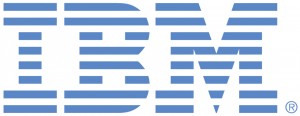GovLoop’s online social cast, Your Building Data is the Source of New Savings and Efficiencies for Energy, Operations & Space Management, sought to understand the ins and outs of smart buildings with an expert panel:
• Steve Sakach, Assistant Commissioner, Office of Facilities Management, Public Buildings Service, General Services Administration
• Don Coffelt, Associate Vice President for Facilities Management Services, Carnegie Mellon University
• Joe Phillips, Director, IBM Smarter Building Services
After listening to the robust discussion, in our previous recap we defined four steps:
- Define your data and mission
- Get buy-in
- Dive deeper into data
- Look to the future
So how did GSA really get to a “smarter building”?
IBM helped GSA develop an analytics application that collects data from sensors all around their building every five minutes. The application called, GSA Link, ultimately alerts GSA to any potential failures within the building.
Sakach says that collecting anomalies that are happening every day are key to fixing something that could be costing the agencies millions of dollars without them ever knowing.
Initially GSA was unsure how they would measure if there were actually any increases in efficiencies within the building and a return on their investment. However, Sakach says that of the $16 million invested over the past four years, they have already seen $14 million in savings.
How is Carnegie Mellon modeling their program after GSA?
Carnegie Mellon is in the process of deploying a pilot project that spans a million square feet. This project is a zero capital investment because they already have all they already have the data automated systems. Therefore, they can immediately transform into smart buildings.
However, Coffelt and his team performed extensive research while communicating with IBM to understand their best practices and successes before they implement their project. To ensure their own success, Coffelt built in mechanisms that allow them to make changes as the process evolves over time.
More unique to Carnegie Mellon’s program is their intention to share with the large collection of data from their buildings with IBM. Their hope is that any analysis that comes from their building’s data can inform future programs while helping reduce energy inefficiencies across the country.
To listen to the entire social cast and hear more about how you can create smarter buildings, listen on-demand now!






Leave a Reply
You must be logged in to post a comment.